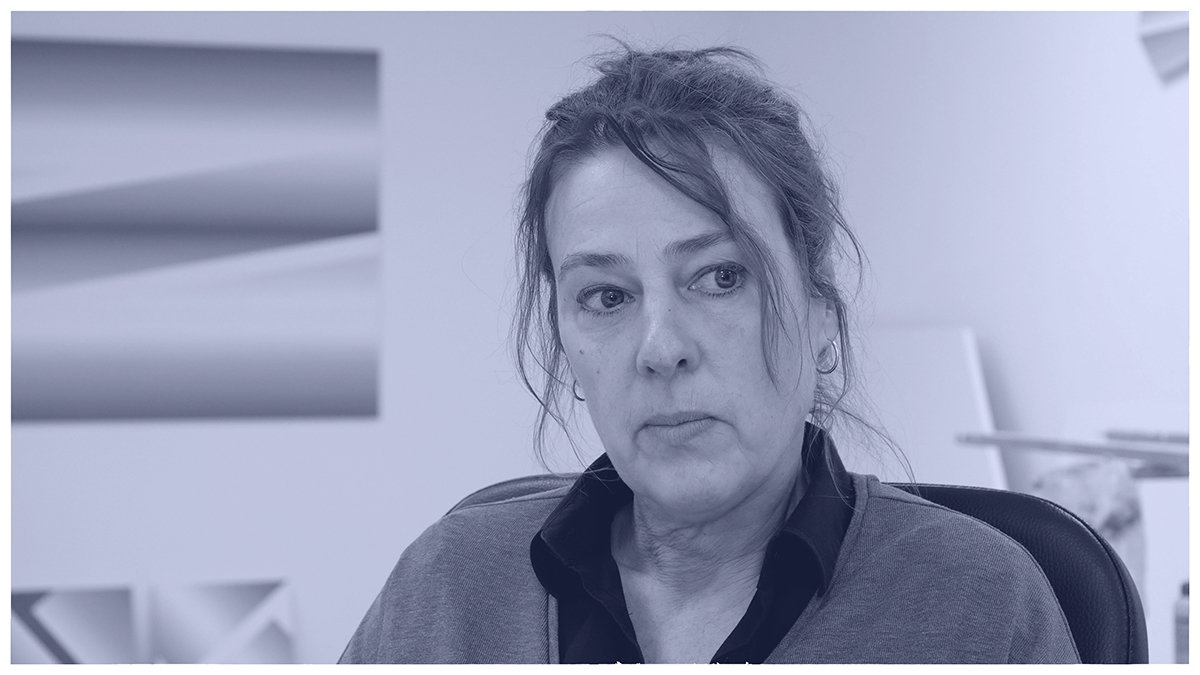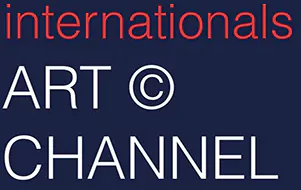Linda Arts studied drawing, painting and printmaking. She makes abstract paintings, light installations, graphics and works in public spaces. In her two-dimensional geometric work, numerous shades of black, white (light) and gray. Space and time play a clear role in perception. In addition to her own work, she is involved in the Graphic Atelier ‘Daglicht’ in Eindhoven and PIT and PARK in Tilburg.
Linda Arts studeerde tekenen, schilderen en grafiek. Zij maakt abstracte schilderijen, licht-installaties, grafiek en werken in de publieke ruimte. In haar twee-dimensionale geometrische werk overheersen tal van schakeringen zwart, wit (licht) en grijzen. Ruimte en tijd spelen een duidelijke rol in de waarneming. Naast haar eigen werk is ze betrokken bij het Grafisch Atelier ‘Daglicht’ in Eindhoven en PIT en PARK in Tilburg.
plea for the unknown
pleidooi voor het onbekende
“black, white, space, light”
starring artist:
linda arts
text notes
nijmegen*)
the more than two thousand year old medium-sized city of nijmegen (nl) , also called ‘noviomagus’ in latin,
is located on the waal river, close to the german border. during the roman empire, nijmegen was part of the limes,
the border between the roman empire and the various so-called germanic areas. nijmegen is nowadays also
known for the presence of the radboud university, founded in 1923.
the waal river*)
the waal river is by far the most water-rich arm of the river rhine in the netherlands and important for shipping
from east to west. the total length of the waal is 82 kilometers and it is 150 meter wide.
beneden-leeuwen*)
the village ‘beneden-leeuwen’ is located in the dutch province of gelderland, next to the waal river.
originally it is a batavian-roman settlement, along the old roman road to nijmegen.
art academy tilburg*)
the so called ‘drawing academy’ was founded in tilburg (nl) in 1918 and in 1920 it became the academy of
visual and building arts. at the end of the 1950s there was a split from architecture. nowadays,
the art courses are (again) clustered under the name fontys academy of the arts. the idea was to encourage
interdisciplinary collaboration: dance arts in context; music and performing arts; circus and performance art;
architecture; urbanism; choreography; music; performing public space.
theater department*)
in this case, the theater department refers to the training to become a designer of sets (decors), clothing,
lighting and props.
free direction*)
today the arts are called free (as opposed to the ‘artes illiberales’) because they were part of the intellectual
training of the free, or exempted. the non-free or applied art then consists of all that knowledge that is
nowadays called professional knowledge, knowledge that serves a specific purpose.
two-dimensional*)
in general, within art education, drawing, painting and graphics are considered two-dimensional arts.
niche*)
a ‘niche’ is a small defined area of factors or conditions in which a particular specialization can flourish.
the term is used in several fields.
abstract*)
‘abstraction’ comes from the latin ‘abs-trahere’ and means to omit, to remove, to take distance. the literal
meaning is therefore, ‘distancing yourself from reality’. geometric abstraction is abstract art with geometric
shapes. the history of abstract art dates back to prehistoric times. at the beginning of the twentieth century
it grew into a distinct art movement in contrast to figuration in art.
charcoal drawings*)
charcoal (latin: carbo), or carbonization of wood, is virtually pure carbon. because it releases black and then
binds strongly to its surface, it is also suitable for artistic purposes such as drawing. james ensor (1860 – 1949)
and pablo picasso (1881 – 1973) made drawings with charcoal. but charcoal was also used in prehistoric
cave painting.
grid*)
a ‘grid’ consists of (imaginary) horizontal and vertical lines. in between there is a white space (margin or gutter)
which is always the same. when working with a grid, the result will look structured.
perspective*)
‘perspective’ (geometry) is defined as when the connecting lines through the vertices of polygons converge in
one point.
dansaekhwa*)
‘dansaekhwa’ is only one of a number of terms used to describe the works that have been identified as falling
under this rubric. other terms are: ‘monochrome painting’ and ‘monotone school’. ‘dansaekhwa’ grew to be
the international face of contemporary korean art and a cornerstone of contemporary asian art.
jan schoonhoven*)
the dutch artist jan schoonhoven (1914 – 1994) is mainly known for his monochrome geometric white reliefs
made of cardboard and papier marché. in 1960, he and colleagues founded the so-called ‘zero group’,
which looked for objective art that was stripped of any emotional value.
frank stella*)
american artist frank stella (1936) established his name at a young age with his ‘black painting’ series, an early
form of minimal art. this was abstract, non-illusionistic art that exchanged the personal of ‘action painting’ f
or the formal and factual.
agnes martin*)
agnes martin (1912 – 2004) was an american painter. in 1973 she created thirty screen prints under the title
‘on a clear day’. her work is often classified as ‘minimal art’, but she preferred to call it ‘abstract expressionism’.
site specific work*)
site specific work arose in the netherlands more or less partly under the influence of the so called percentage
scheme for buildings, being 1.5% of the new construction sum, which was reserved for art. specifically in tilburg
in the early 1980s – the famous councilor for culture miet van puijenbroek (1914 – 1999) added the extra 1%
scheme, funded from the budget for preparing building land for construction. in this way, tilburg was the first city
in the netherlands that could, in a real sense, realize site specific art works (in public space) in a free manner.
hezelpoort-gate*)
the added bicycle tunnel under the railway at the nijmegen railway bridge hezelpoort (national monument).
ludwig forum*)
the ‘ludwig forum for international art’ (founded in 1970) is a museum for modern art in aachen (de).
it is based on the ludwig collection, including outstanding works from the russian avant-garde, which
was brought together by the aachen collector couple irene and peter ludwig.
museum kunstlicht in de kunst*)
centrum ‘kunstlicht in de kunst’ (artificial light in the art) in eindhoven (nl) was a museum (2002 – 2010) that
focused on the role and influence of light in art. the museum was located in philips’ first light bulb factory.
the museum exhibited paintings and sculptures relating to the use and effects of artificial light, about the
different angles and the visual power of artificial light, ‘translated’ by artists.
light art centre*)
the ‘light art center’ in eindhoven (nl) is more or less the successor to the museum of ‘artificial light in art’
art and presents light projects in various settings, more or less on an irregular basis.
philips lightning*)
in 2016, ‘philips lighting’ was floated on the stock exchange. in 2018, the company name was changed to ‘signify’.
the company continues to use the brand name ‘philips’ and is a dutch manufacturer of light sources, traditionally
a division of royal philips electronics n.v.
witte dame*)
the monumental building ‘witte dame’ (‘white lady’) was built in 1922 for n.v. philips light bulbs factories
(architect: dirk roosenburg). later radio tubes, tungsten wires and finally electron tubes were produced there.
it acquired its gray-white color in 1953. since the 1990s, the building has been repurposed and restored
(architect bert dirrix) as part of the redevelopment of strijp-s industrial area.
hilvaria studio’s*)
the hilvaria studios in hilvarenbeek (nl) were built in 1964 as a film studio. later the studio was also used by directors
of erotic films such as the kronhausen couple and lasse braun. in 1974, part of the building was used as a sound
studio (relight studio) where famous names recorded their albums. since 1991, hilvaria studios has been restored
and expanded by its new owner hans höhner and used as a venue for conferences and art with exhibitions and
special projects.
the egg*)
‘het ei’ (‘the egg’) is the nickname of the large photo studio of the hilvaria studios building complex in
hilvarenbeek (nl). built at the time for photographing the new ‘daf’-trucks in particular.
graphic atelier*)
the full name is ‘graphic atelier daylight’, which has been in existence for more than 25 years and is located
on the campus of the technical university in eindhoven (nl). the studio is open to professional artists who want
to create graphic art works. experienced graphic fellow artists provide daily assistance.
pit*)
project initiative tilburg (nl) – ‘pit’ (founded by linda arts in 2008) is an independent, artist-led nomadic initiative.
it provides a platform for art projects and exhibitions. ‘pit’ uses various (art) spaces to realize its projects.
these spaces range from art initiatives, workshops, galleries and / or public spaces.
park*)
at the beginning of 2013, the ‘park foundation’ – ‘platform for visual arts’ in tilburg (nl) – was founded and since then, exhibitions and many related art activities have been continuously organized in the former chapel space of the orphanage ‘maria goretti’ (1912 – 1972) located at the wilhelmina park in tilburg (nl). the first organization to bring art to the former orphanage, was the ‘ennu foundation’ (1982 – 2010).
slow art*)
the concept of ‘slow art’ has gained acceptance through the perception that intensively viewing a work of art
instead of ‘scanning’ it in a few seconds creates an intensive experience. nowadays there is celebrated a so-called ‘slow art day’ in museums worldwide to encourage people to admire works of art in detail.
credits projects
shown by linda arts
mural, sno – sydney non objective, sydney (aus 2013)
mural, aditi dům umĕmí, house of art (cz 2013)
silkscreen on paper (w.y.)
acryl on paper (2019)
mural, codarts, rotterdam (nl 2014)
mural public space, museum de lakenhal, leiden (nl 2017)
overview exhibition, de pont museum, tilburg (nl 2007)
mural elekton, breda (nl 2015)
oil painting on canvas (2019)
work on paper (w.y.)
oil painting and acryl on canvas (2022)
three examples of inspiration – from architecture (locations unknown, w.y.)
mural gallery ursula walter, dresden (de 2020)
mural the great wall, phk 18, rotterdam (nl 2018)
assignment public space, bike-tunnel ‘hezelpoort’ nijmegen (nl 2020)
mural, museum ludwig, forum for international art, aachen (de 2016)
light mural, light art center, eindhoven (nl 2013)
light wall with animation, ‘both sides now’, location: ‘the egg’ – hilvaria studio’s, hilvarenbeek (nl 2020)
art work: linda arts
music animation licht wall: peter robben
dancer: robin werdler
saxephone: tom sanderman
composition: redshift
composer: anthony fiumara.
curator / photos: tineke schuurmans
painting, group exhibition ‘toonbeelden’, de pont museum, tilburg (nl 2005)
oil on panel, collection ‘heden’ (today), the hague, (nl 2009)
light installation, museum kunstlicht in de kunst (artificial light in art), eindhoven (nl 2005).
oil and acrylic on canvas (2022)
oil and varnish on canvas (private collection 2016)
oil on panel (private collection 2006)
fold o.s., ‘omstand’ space for contemporary art, arnhem (nl 2023)
garden sculpture as social object: ’lawnscaping’, commissioned by: phea design, open garden days duizel (nl 2022)

portrait 15 – Linda Arts
black, white, space, light
camera and video editing: tom pijnenburg
research, editorial, text titles: jan doms
leader:
graphic design: jan doms
opening sequence: pieter reijnen & tom pijnenburg
sound: aspa petrov – prefuse 73 dvořák
ernst bonis – composition taksim
music end credits: anthony fiumara – redshift, saxophonist tom sanderman
portrait 15 – Linda Arts
black, white, space, light
is made possible by:
production and distribution:
internationals art channel foundation
tilburg – heart of brabant
the netherlands
portrait 15 – Linda Arts
black, white, space, light
art © channel

